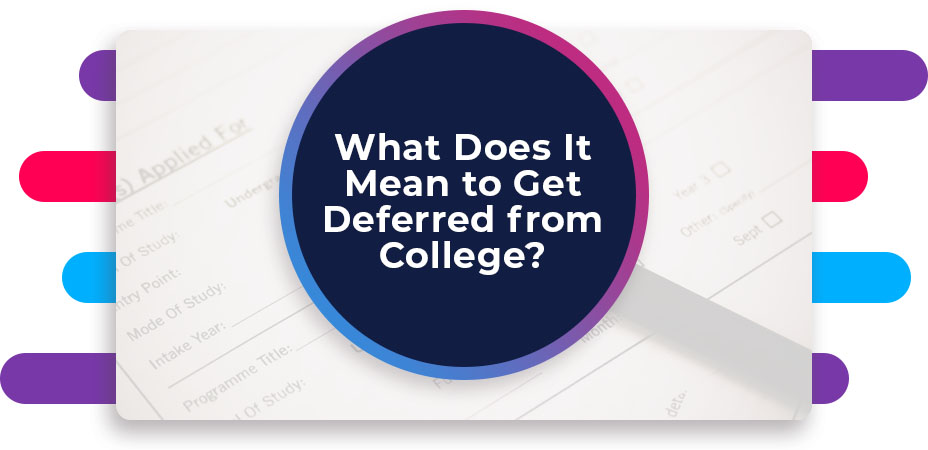College fit refers to how well a college matches a student’s academic, social, financial, and personal needs. Key factors include academic programs, campus culture, location, cost, size, and extracurricular opportunities. A good college fit ensures student success, satisfaction, and long-term career benefits.
Finding a College that Checks All of the Boxes
“College fit” is a term that describes choosing the right college for your future goals, personal needs, academic readiness, and financial resources. No college or college campus is the same—colleges run the gamut from small local schools to large sprawling institutions. With so many choices, it may take time to determine what higher education institution works best for you. In this article, we’ll explore factors to consider for a good college fit.
Explore Careers and College Majors
With the considerable cost of a college degree, it seems practical to find your fit by examining only financial costs. While finances are a determining factor, it should not be the first consideration. Instead, your career goals should be your starting point.
Still, trying to figure out your career goals? Consider taking a career interest assessment, which can indicate how your interests, personality traits, and preferred work activities match specific occupations. Inventory results are communicated in broad career categories to showcase the various occupations. College majors are a field of interest or study that a college offers that align with career categories.
For example, you may be interested in a business career. Many colleges offer business as a major, and after you complete general courses, you can determine if you want to concentrate your studies on finances, economics, public administration, entrepreneurship, business management, or other specific interests. Before you start looking for a college, it’s important to explore your career interests and how those interests might fit with a college major.
Estimate Financial Costs
One of the biggest concerns for college is the finances to pay for it. The cost of a college degree has tripled in the last three decades, and many students are graduating with substantial student debt. Tuition and fees vary widely, so finding a balance between your college costs and your financial limits is optimal. Estimate the tuition, fees, and living costs necessary for four years as closely as possible.
Out-of-state tuition is typically higher than attending college in the state where you live; community or regional colleges also have a lower tuition rate than universities. To lower overall costs, some students begin at a community college and then transfer their credits to a larger university to finish their degree.
Source Financial Aid Options
All colleges have financial aid offices. Once you apply to a college, you can be considered for financial aid (this might be a separate application or part of the college’s general application process). Financial need, merit, or talent determines available financial aid options.
A few of the main ways to qualify for financial aid:
- Grants or low-interest loans based on individual or family income
- Scholarships, grants, or tuition waivers based on a high GPA, high ACT or SAT score, or because of a special talent or skill
Once you apply, the college’s financial aid office sends you an estimate of a financial aid package—essentially, the amount of money you can expect to receive in grants, scholarships, tuition waivers, or loans. You can then determine how much the financial aid package will offset your college costs.
Assess Academic Readiness
Your academic readiness for college is a factor in college fit.” All colleges have academic requirements like a minimum GPA, high school academic ranking, an ACT or SAT minimum score, or some combination of these. You may also be required to take academic readiness tests in English and math. Your academic readiness should also include skills such as note-taking, completing projects independently, reading for comprehension, and exam preparation.
If your GPA, ACT/SAT scores, or academic skills are less than institution requirements, consider choosing a college that has lower academic requirements and smaller class sizes. Colleges with smaller class sizes and student populations offer greater opportunities for academic support from professors and the school community. Often these colleges are specifically equipped to help when students struggle academically. Whatever college you choose, understand the academic skills you need to succeed and the academic support services the college provides.
Explore Student Life
A college must fit your personal and social needs. A study by Ohio State University indicated that student involvement beyond the classroom positively contributed to academic performance, cognitive development, leadership, well-being, and multicultural awareness. The culture of a college positively contributes to student life.
Consider a college’s social and service opportunities, the campus environment, academic and mental health support services, class size, location, and safety. Determine if a large, diverse urban school energizes you or feel more comfortable with a smaller community-centered school. Do you want to join social organizations, participate in activism or volunteerism, stay close to home, or need student employment? All are factors that will impact your well-being at college.
Assess the student life at a particular college by talking with alums of the college or students who are currently attending the college, as well as perusing the college’s website and following social media to give you insight into the college’s environment. Ultimately it’s essential to visit the campus, schedule a college tour, and ask lots of questions. The Princeton Review has compiled a list of questions you can ask during your campus visit. Select the ones that are of utmost importance to you. If possible, visit the campus more than once.
Do Your Homework
Finding a college that fits your needs involves research and creating a list of colleges that meet most or all of your requirements. Best Colleges recommends applying to at least five colleges, and College Board suggests applications to between five to eight colleges. Colleges will offer differing financial aid packages or other incentives, so if financial cost is a critical factor, compare your chosen colleges’ offerings. Whatever your ultimate choice, finding the right fit will contribute positively to your longevity and success at college.
Your interests and goals may evolve during your higher education journey. To prepare for potential changes in college fit:
- Choose a college with a diverse range of academic programs and majors
- Look for institutions that offer flexibility in changing majors or adding minors
- Consider schools with strong general education requirements to build a broad foundation
- Research the process for transferring credits between programs or even to other universities
Remember, a good college fit should allow room for personal growth and exploration throughout your academic career.
Common Questions
Below are common questions we get asked about this topic.
How can I assess my learning style to find the right college match?
Understanding your learning style is essential for finding a good college fit. Take a college quiz or self-assessment to identify whether you’re a visual, auditory, or kinesthetic learner.
Then, research the teaching methods and class sizes at different universities. For example, if you’re a hands-on learner, look for colleges that offer plenty of lab work, internships, and practical experiences. Don’t hesitate to ask current students or alumni about their experiences with academic programs and teaching styles during campus visits or virtual tours.
How does college fit impact career development beyond graduation?
College fit plays a significant role in your long-term career goals. A good fit can lead to better networking opportunities, more relevant internships, and stronger alumni connections. Research the career services offered by different institutions, including job placement rates, alumni mentorship programs, and industry partnerships.
Consider how well the college’s academic programs align with your intended career path and whether they offer specialized courses or certifications that could give you an edge in the job market after graduation.
Can college fit change over time, and how should I prepare for that possibility?
Your interests and goals may evolve during your higher education journey. To prepare for potential changes in college fit:
– Choose a college with a diverse range of academic programs and majors
– Look for institutions that offer flexibility in changing majors or adding minors
– Consider schools with strong general education requirements to build a broad foundation
– Research the process for transferring credits between programs or even to other universities
Remember, a good college fit should allow room for personal growth and exploration throughout your academic career.
How does campus culture impact college fit for non-traditional students?
Non-traditional students, such as adult learners or those with families, should consider unique aspects of college fit:
– Availability of online or hybrid courses for flexibility
– Support services for non-traditional students (e.g., childcare, evening office hours)
– Campus housing options for families or older students
– Student organizations or events catering to diverse age groups and life experiences
Research the student body demographics and ask about specific programs or resources for non-traditional students during the college application process. This will help ensure a supportive environment that accommodates your unique needs and fosters your academic success.







